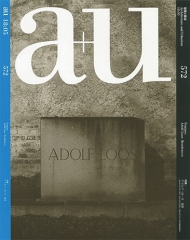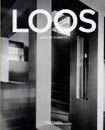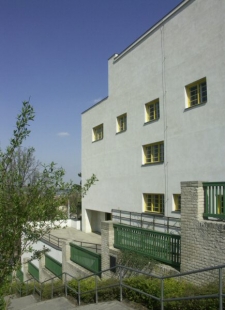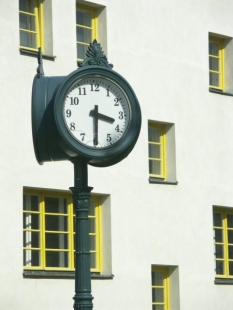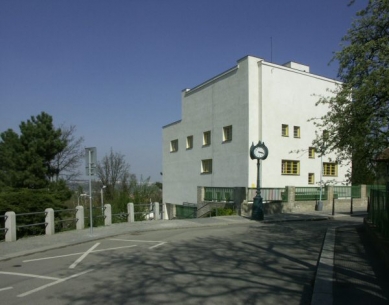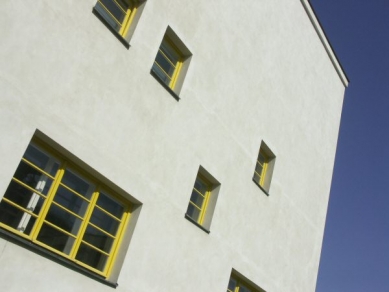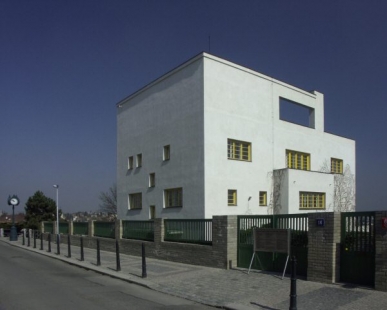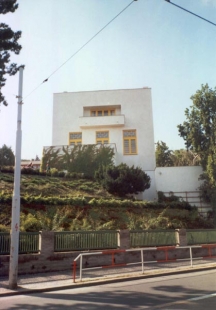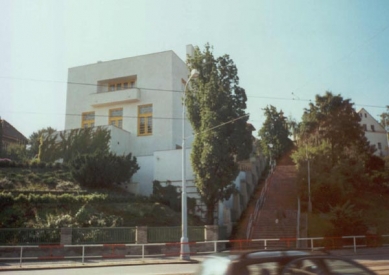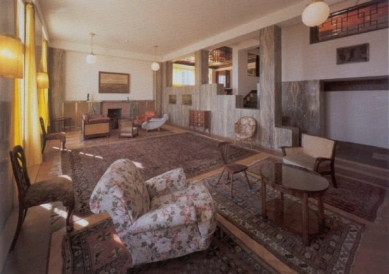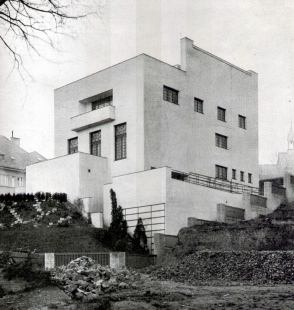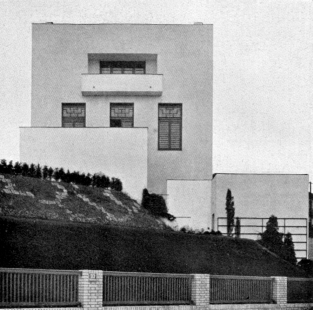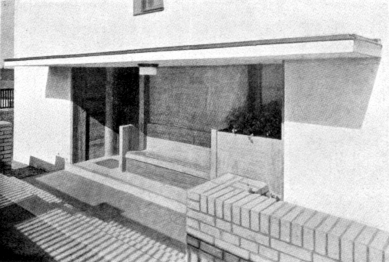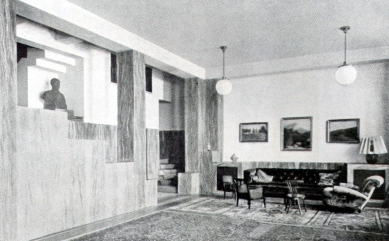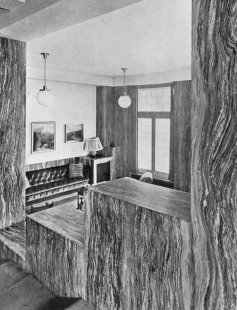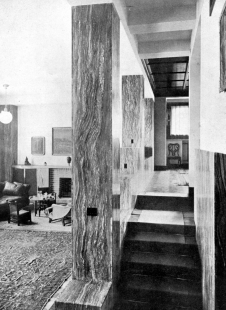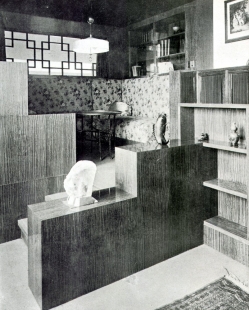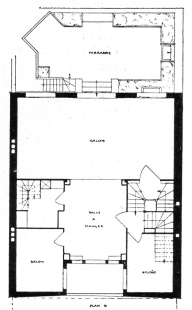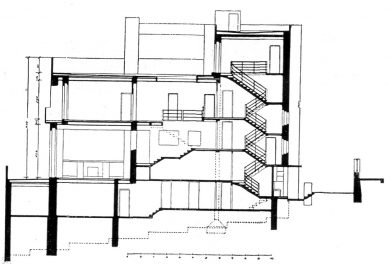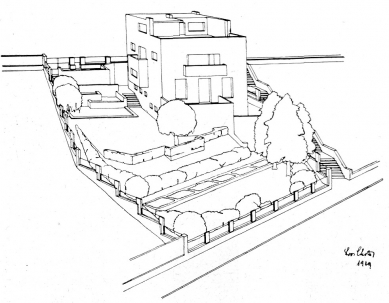
Müller Villa

The Müller Villa in Prague-Střešovice, located at Nad hradním vodojemem 14, the work of architects Adolf Loos and Karel Lhota from 1928-1930, undoubtedly ranks among the most significant monuments of modern architecture in Central Europe. It culminated Loos's concept of Raumplan; the architect's ability to first envision space "with the spiritual eye," as Loos expressed in his 1898 essay "Das Prinzip der Bekleidung," and to adeptly play chess on a three-dimensional spatial chessboard - as he wrote directly during the work on the Müller Villa, in 1929, in the obituary of the Vienna carpenter Josef Veillich. The outstanding architecture would not have been created by Loos or Lhota without an extraordinary harmony with their clients, the wealthy construction entrepreneur František Müller and his wife Milada. Müller was so excited about his new residence that he even considered writing a book about Loos, which was to be co-authored by art historian Antonín Matějček and writer Bohumil Markalous-John.
The fate of the villa after the political upheaval in 1948 was unfortunate. The state confiscated it. František Müller (+1951) and Mrs. Milada (+1968) could only continue to use a few rooms. In the 1950s, the house served as a depository for the Prague Museum of Applied Arts. Later, it housed the State Pedagogical Publishing House, and from 1976, the archive of the Institute of Marxism-Leninism of the Central Committee of the Communist Party of Czechoslovakia. A significant part of Loos's furnishings was saved at that time by the Museum of Applied Arts, the National Gallery, the West Bohemian Gallery in Pilsen, and employees of the Prague Institute for Preservation of Historical Monuments.
After 1976, the space of the villa was filled with cupboards and shelves. The rooms under the roof underwent inappropriate adaptations. The structure of the house, wall and ceiling cladding, wallpapers, and large ensembles of built-in furniture slowly deteriorated, but fortunately remained mostly intact. Many Czech architects, preservationists, and art historians recognized the great value of Loos and Lhota's work and consistently highlighted it. At a time when Brno architect František Kalivoda made a call for the reconstruction of the Tugendhat Villa by Ludwig Mies van der Rohe, Prague architectural historian Marie Benešová advocated for the Müller Villa to also be restored "to its original state," including the furniture and paintings from the previous owner's collection (1969). The state also then declared the Müller Villa a cultural monument. However, it would take another thirty years for changed political circumstances to allow the idea of restoration to be realized. The co-owner of the villa, the city of Prague, purchased the remaining part of the building from Mrs. Müller's daughter in 1995. The city then entrusted the restoration of Loos's and Lhota's building to the Museum of the Capital City of Prague. In 1997, this museum announced a competition for the reconstruction project of the house, in which the Prague studio of Václav Girsa won.
The fate of the villa after the political upheaval in 1948 was unfortunate. The state confiscated it. František Müller (+1951) and Mrs. Milada (+1968) could only continue to use a few rooms. In the 1950s, the house served as a depository for the Prague Museum of Applied Arts. Later, it housed the State Pedagogical Publishing House, and from 1976, the archive of the Institute of Marxism-Leninism of the Central Committee of the Communist Party of Czechoslovakia. A significant part of Loos's furnishings was saved at that time by the Museum of Applied Arts, the National Gallery, the West Bohemian Gallery in Pilsen, and employees of the Prague Institute for Preservation of Historical Monuments.
After 1976, the space of the villa was filled with cupboards and shelves. The rooms under the roof underwent inappropriate adaptations. The structure of the house, wall and ceiling cladding, wallpapers, and large ensembles of built-in furniture slowly deteriorated, but fortunately remained mostly intact. Many Czech architects, preservationists, and art historians recognized the great value of Loos and Lhota's work and consistently highlighted it. At a time when Brno architect František Kalivoda made a call for the reconstruction of the Tugendhat Villa by Ludwig Mies van der Rohe, Prague architectural historian Marie Benešová advocated for the Müller Villa to also be restored "to its original state," including the furniture and paintings from the previous owner's collection (1969). The state also then declared the Müller Villa a cultural monument. However, it would take another thirty years for changed political circumstances to allow the idea of restoration to be realized. The co-owner of the villa, the city of Prague, purchased the remaining part of the building from Mrs. Müller's daughter in 1995. The city then entrusted the restoration of Loos's and Lhota's building to the Museum of the Capital City of Prague. In 1997, this museum announced a competition for the reconstruction project of the house, in which the Prague studio of Václav Girsa won.
The English translation is powered by AI tool. Switch to Czech to view the original text source.
4 comments
add comment
Subject
Author
Date
stelesnenie východzieho bodu modernej architektúry
Ľuboš Lorenz
30.09.06 12:39
pro L.L.
robert
02.10.06 08:30
orientácie je v poriadku
Ľuboš Lorenz
02.10.06 01:06
ještě k raumplanu pro L.L.
robert
04.10.06 01:09
show all comments



